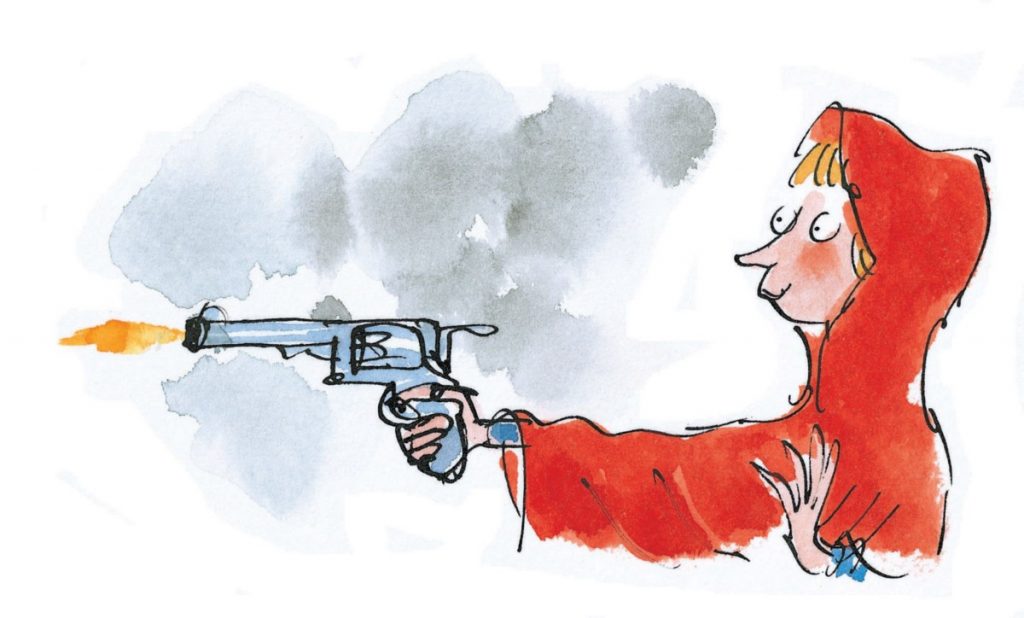Before reading Roald Dahl’s version of the Little Red Riding Hood, I could have never pictured this version of the “sweet and innocent” little girl that is typically portraited in media. I loved how she wasn’t given the typical treatment that young girls usually have, instead, she had agency. My jaw physically dropped open when I read that she pulled a “pistol from her knickers”. Flipping the typical script to have Little Red Riding Hood as a cold-blooded killer completely shocked me. Instead of a man rescuing her, or barely being able to slip away from the wolf, she was walking around with a wolf-skin coat and pistol underneath. The imagery of this is incredible. No longer wearing her iconic red hood but instead covered in the skin of the animal that ate her grandmother. I don’t think this tale will elicit the same reactions within every reader. Some may prefer the classic Grimm or Calvino stories, but I think the revenge in this version is so satisfying to read.



